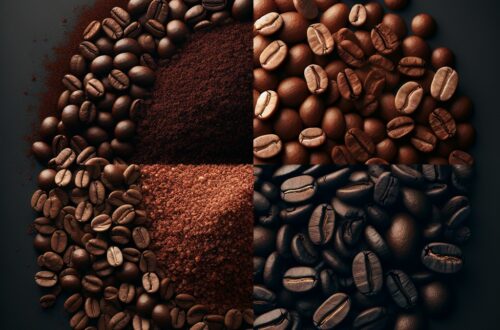Understanding Robusta and Arabica: A Comparative Study
In the world of coffee, two names that frequently come into conversation are Robusta and Arabica. These beans are distinctly different and having an understanding of their diverse taste profiles and characteristics plays a significant role in appreciating the enthralling world of coffee drinks.
A Dive into the Taste Profile of Robusta Coffee Beans
Robusta coffee beans emanate a strong, provocative bitter taste. Often, connoisseurs detect a grainy or rubbery overtone that is rather unique to this variety. License your palate with the experience and you may even find a hint of a pleasant earthy flavor with the breath of oak tones.
| Taste Description | Characteristics |
|---|---|
| Strong, bitter taste | Grainy/rubbery overtones |
| Earthy flavor | Oak tones and pleasant bitterness |
| High caffeine content | Larger bean size |
| Smooth texture | Hints of chocolate |
| Aftertaste | Reminiscent of peanuts |
Exploring the Characteristics of Arabica Beans
Contrary to Robusta, Arabica beans are known for their sweeter, softer taste that is often associated with tones of sugar, fruit, and berries. Physically, Arabica beans are generally ovular, flat and oilier compared to their robust counterpart. Interestingly, they share a close relationship with the species Coffea Arabica, a major component in high-quality coffee.
The Commercial Perception of Robusta Beans
Regrettably, Robusta is often incorrectly pigeonholed as a lower-quality coffee variety due to its pronounced strong and bitter taste. However, in truth, it is a major commercial crop used widely in commercial blends. In part thanks to its hardy nature, making it immune to certain conditions that would be detrimental to other varieties, a characteristic scent distinctly different from Arabica beans.
Comparing Growing Conditions and Adaptability
The hardy nature of Robusta beans allows them to thrive in diverse environments. Contrarily, Arabica beans have a predilection for higher altitudes and specific climates, thus impacting each variety’s taste profile and resulting harvest yield.
Unveiling Cultivation and Harvesting Processes
The methods of cultivating and harvesting also differ for each bean. Differences include the peak times for harvesting to ensure optimal flavor, the processing methods implemented, and the sustainability practices in place for coffee farming.
By exploring the world of coffee and understanding the intricacies, complexities, and effort involved in cultivating each variety, your coffee experience can be greatly enhanced. Discover more about how a coffee machine affects the flavour of your cup here.
Shop at Breville now!
https://breville.oie8.net/oqDqrE
Shop RobustaCoffee Beans at Amazon now!
Click here





